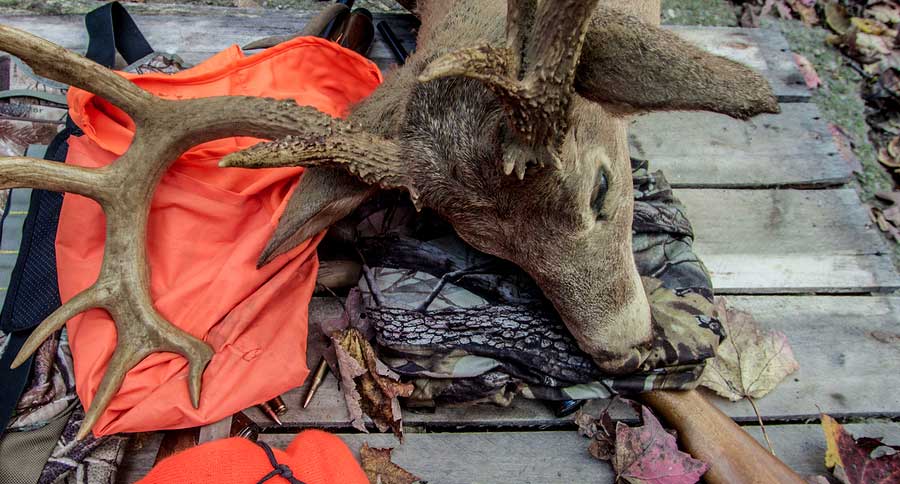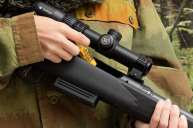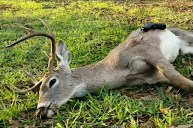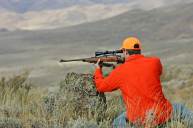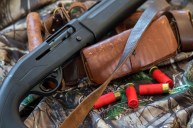Avoiding these common mistakes will make you a safer hunter this fall.
With hunting seasons either already here or fast approaching for most states, now is a good time to talk about hunter safety again. Hunting safety isn't just something new hunters need to be concerned with. It's something all of us should think about every time we step in the woods.
It's helpful to review if it's been a while since you last took a hunter education course. If you're new and about to take a safety course, let's review some of the more common things that should give you a leg up on the other pupils.
From firearm safety to treestand safety, don't forget these things before you head out for the first time this season.
Not making sure firearms are unloaded
The most common denominator of almost every accidental shooting story I've ever read (or written) is these words: "they thought the gun was unloaded."
You simply cannot, under any circumstances, take chances. Treat every firearm as if it is loaded and if you have any doubt at all when transporting to your hunting spot or after coming in for the evening, you need to double-check.
I hunt mainly with a Remington 870 shotgun I usually point the barrel at the ground, away from my feet, and always rack the pump five or six times once I'm done hunting to unload, even though I only put three in at a time.
I do this because it leaves absolutely no margin for error. I do the same with my Glock 19 after removing the magazine and visually checking to make sure there is no round in the chamber. Five or six racks of the slide is what it takes to convince me it's unloaded.
Whatever you do, NEVER assume a firearm is unloaded. Always check, safely of course, when handling one. It sounds like common sense, but the next time you're at your local gun shop, ask them how often people bring in guns that are loaded. The answer might surprise and frighten you!
Not knowing your firearm
No, this is not the same as making sure it's unloaded. When I say know your firearm, I mean knowing things like how it operates, what its effective range is, how many rounds it can hold, and how to deal with jams and misfires. Things like that.
The effective range part is an especially important aspect of this equation. When you're taking a shot at an animal, you want to make sure you can put it down quickly and humanely. But you also want to think about what's beyond your target.
You must be sure that a missed shot isn't going to be a danger for others. When lining up a shot, you need to think about how far the round could travel if errant. Could it potentially hit houses or cross over roads?
If you're using something like a muzzleloader, it is paramount you research what powders your gun can handle ahead of time. Ever notice all the warnings against using smokeless powder in a muzzleloader? It's because it could potentially cause the gun to blow up!
Avoid becoming a hunting accident statistic and read the owner's manual. Call the manufacturer if you have any further questions.
Not using a treestand safety harness
Every year, far too many hunters throw caution to the wind by utilizing a treestand with no safety harness. And some hunters find out the hard way how a fall from a tree can totally change your life.
That's why the hunter education program I attended brought in a hunter who had survived such a fall.
While he was still deer hunting, his life will never be the same again. He was paralyzed from the waist down. You could have heard a pin drop in that room as he told his story and how his life has changed, all because he didn't think he needed to strap in.
Sadly, this sort of story is all too common and can be avoided. The best hunter safety systems on the market will not only keep you from falling off your perch, but will also help you avoid mishaps while climbing or attaching a stand with a series of climbing tethers.
A good harness can be expensive, but you shouldn't skimp on an item this important to safe hunting. Remember that your family and friends are expecting you home at the end of the hunt.
This topic dovetails right into our next safety tip...
Not using a pull up rope
This is another thing that gets overlooked often, but it's a simple tool that can help avoid an accident while climbing. Use a pull up or hoist rope to bring your gear up into the treestand once you are situated and your safety harness is securely fastened.
This is especially important for firearms or bows because it frees up your hands to do the climbing. Just make sure you unload your firearm and keep the action open while hoisting it, and pull it up with the barrel pointing down.
This goes back to the basic firearm safety things we talked about earlier. Keep that barrel pointed in a safe direction!
Not adhering to shooting zones
This one is specific to group hunting. Mostly you'll be using this for stuff like upland bird hunting, but this is important for when you're doing a deer drive too. Basically, you must establish imaginary lines or zones where each hunter will be allowed to take shots at birds, rabbits or other game.
It's most important to stay in a line while doing this because it means you won't be walking into anyone else's line of fire. This is especially important if you're doing a deer drive with rifles and the hunters are spread out further.
Really, this is very simple. It's just about having awareness of where everyone in your hunting party is located.
Don't forget about hunting dogs, too! They will be running in and out of these zones and you'll want to keep your shots high and above their heads. If you're confused, the video above from the National Shooting Sports Foundation does a good job of displaying exactly what I'm talking about here.
You'll want to do something similar for waterfowl. Make sure each person knows the zone they're allowed to take shots in ahead of time. You don't want anyone to accidentally swing their muzzle in someone else's direction.
Using the wrong shells
This can happen for many types of firearms, but you'll most often encounter it with shotguns, and especially for bird hunting. Line up a 28 gauge, 20 gauge and 16 gauge shotgun shell and look at them from the ends. The diameters are incredibly close to one another. If you own multiple shotguns of a similar gauge, pay close attention to what you bring with you in the field each day. You don't want to accidentally slip the wrong gauge in the wrong gun.
Give all the ammo you're taking afield a good once-over before you head out for the day. The wrong shell has the potential to not only damage your gun permanently, but it could also severely hurt you.
As the video above demonstrates, a 20 gauge shell loaded in a 12 gauge shotgun slips down the barrel and causes a major obstruction and a possibility of a barrel explosion that could cause severe burns, eye damage or even mangle your hands.
Not correctly identifying your target
Every hunting season I sit in my treestand during firearms season and I can hear the neighbors just blasting away with shot after shot. It always makes me nervous hearing three or four consecutive shots like that because it's highly likely they're taking potshots at something running that they didn't positively identify first.
I know that some hunters like to take running shots at deer, but I am simply not one of them. I won't take a shot until I can positively identify what I'm looking at is my target animal and that it is one I want to shoot.
Does this mean that I miss out on some opportunities? You bet it does. That's part of hunting.
Identifying your target applies to hunting for fast-moving animals like rabbits and ducks too. With waterfowl, it's especially important. It's not just a safety thing, not identifying your target could land you in hot water with the game warden too. Let's say you're out for the first day of duck season and fire at a fast-moving bird you assume is a mallard. Your dog brings it back and it's a late migrating teal. What do you do?
Simply put, if you can't fully identify what is you're looking at, you shouldn't even be pointing your bow or gun at it, let alone taking a shot. That white flash you thought was a deer's tail could just as easily be a small child running through the woods with a white scarf.
Hunters not properly identifying their targets before shooting leads to most hunting accidents you will read about.
Not wearing and eye protection
If you're going to be doing a form of hunting where you'll be taking a lot of shots, it pays to protect your ears and eyes. It's true that while the adrenaline is pumping, you might not even notice the noise from your firearm. But that doesn't mean it isn't doing damage.
Consider the fact that your average rock concert reaches a noise level of around 100-120 decibels. Most firearms have a noise around 140-170 decibels. It's just not a good idea to keep exposing yourself to that kind of noise level consistently while trying to get your fill of doves.
And eye protection is just a good idea anytime you're doing a lot of shooting, not just while hunting. All it takes is one piece of hot brass flying back in your face to either severely damage your eye or possibly even blind you.
For more outdoor content from Travis Smola, be sure to follow him on Twitter and check out his Geocaching and Outdoors with Travis Youtube channels.
NEXT: WHAT BIG GAME SPECIES CAN YOU HUNT IN CANADA?
WATCH
